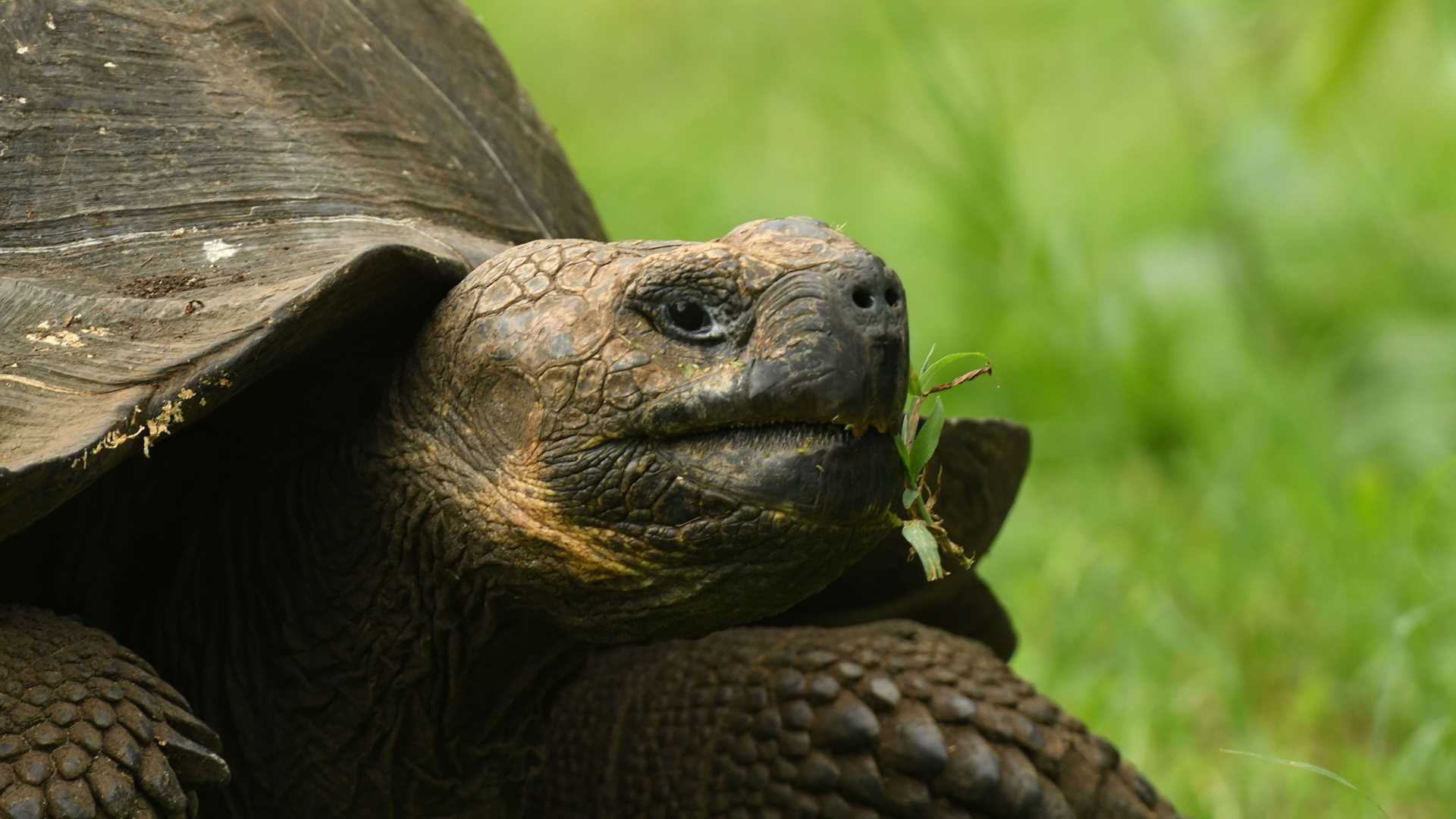We started our day with a beautiful sunrise and a stretching session with our wellness specialist, followed by a very nutritious breakfast prepared by our wonderful team of cooks. Today was an exciting day as we went to visit a very different ecosystem that our guests had not seen or experienced before. We explored the humid highlands in Santa Cruz Island, the most central island in the archipelago and the island with the largest human population. After disembarkation, our Zodiacs took us to the Itabaca Channel, a very narrow and shallow area that divides Santa Cruz from Baltra Island. Several buses were waiting for us so we could start our morning adventure. The ride was not long, only about 40 minutes, and it flew by as we enjoyed the scenery of the diverse vegetation zones of the island. After arriving at the ranch and putting on our rubber boots, we were ready to find those giants, the Galapagos giant tortoises. The naturalists shared their ample knowledge about these ancient and iconic animals. Then we enjoyed a delicious lunch prepared by our cooks and the Manzanillo Ranch team. After a relaxing time, we boarded buses to return to our wonderful floating hotel. We enjoyed a naturalist’s presentation on the oceanography of the Galapagos Islands. Our day was not over yet; it was now time to explore the pristine white sandy beach of Bachas, located in the north of Santa Cruz. Our guests enjoyed the soft sand, warm sun, and lots of wildlife sightings, including some Galapagos flamingos. After relaxing and bathing in the sea, we came back to National Geographic Endeavour II and listened to our recap session and a briefing for the next day’s activities. What a day!
- Daily Expedition Reports
- 05 Apr 2022
Highlands, Santa Cruz Island, 4/5/2022, National Geographic Endeavour II
- Aboard the National Geographic Endeavour II
- Galápagos
Adriana Aguirre, Naturalist
Adriana was born in Guayaquil , the largest city in Ecuador, on the Pacific coast . When she was only a year old, her parents moved to Galapagos where her father captain ed a small bay - tour boat. She returned to the mainland to finish school, but t...
Read MoreShare Report
Exploring Galápagos
VIEW ITINERARYRelated Reports
5/7/2025
Read
National Geographic Delfina
Bahía Urbina and Tagus Cove, Isabela Island
As the sun rose, we headed to Urbina Bay, a visitor site found on Isabela Island at the slopes of the marvelous Alcedo Volcano. Isabela is home to a unique morphotype of dome-shelled tortoises and arguably the most pristine island of the Galapagos. We went for a short walk, and in addition to spotting the popular giants, we also observed the evidence of an uplift event which occurred in 1954. In the afternoon, we navigated for an hour to the historical Tagus Cove, the same place where HMS Beagle once anchored. With elusive octopi, fast swimming penguins, funny looking cormorants, and breathtaking views, we finished another great day in this enchanted archipelago.
5/6/2025
Read
National Geographic Endeavour II
Isabela Island
Navigation brought us to the largest island in the Galapagos Archipelago, Isabela. Holding half of all land mass in the Galapagos, it has a diverse selection of ecosystems that we were able to visit. Urvina Bay was geologically uplifted in the 1950’s, taking two square kilometers of seafloor that was thrust upward, in certain areas up to four meters out of the water. Intertidal species were stranded inland, and we walked upon this area. Galapagos giant tortoises and land iguanas were found on our trail, and we were surrounded by Darwin finches and Galapagos mockingbirds. The afternoon brought us to Tagus Cove where we explored the surrounding waters, encountering Galapagos penguins and Pacific green sea turtles swimming among the kayakers and snorkelers. As the sun dipped below the horizon, adventurous hikers took a fast-paced hike to enjoy an incredible view of Darwin Lake and the immense island of Isabela.







